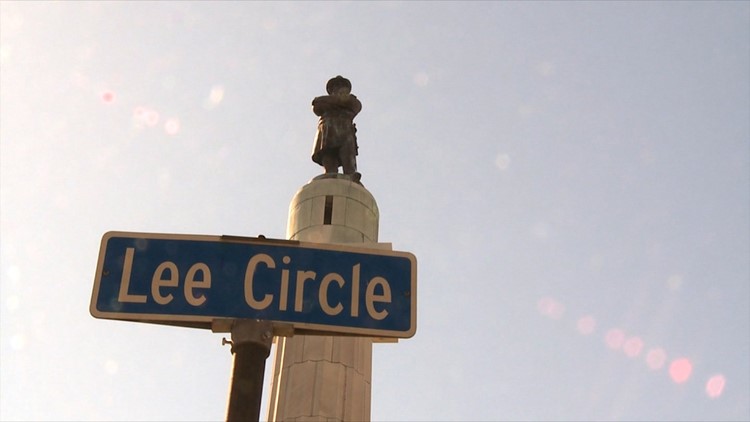(CNN) — In the dark of night, workers wearing masks and tactical vests arrived Monday at New Orleans’ Battle of Liberty Place monument to take it down.
Police snipers were positioned on nearby rooftops, according to The Times-Picayune newspaper, and the trucks and equipment used in the operation had company names covered by cardboard and black tape.
The controversial removal was the first of four scheduled relocations of Confederate memorials in the city, despite weeks of opposition from pro-monument groups and threats against workers. It came as some Southern states celebrated Confederate Memorial Day, although Louisiana is not among them. State government offices in those states will be closed in observance of the holiday.
The Battle of Liberty Place monument was erected in 1891 to mark a deadly fight between members of the “Crescent City White League” — a group opposed to the city’s biracial police force and state militia after the Civil War — and officers from that police force.
A few hours before sunrise Monday, the obelisk — located not far from Canal Street, near the Audubon Aquarium of the Americas — was slowly taken apart as supporters and opponents of the action gathered nearby amid a strong police presence.
The event incited cheers and applause from some people in the crowd while others engaged in heated discussions.
“This should be a celebration but instead this is done clandestinely. They got the workers who are taking it down dressed in black jackets, helmets and their faces are covered, to us that’s cowardice,” one person there told CNN affiliate WVUE-TV.
City officials have attempted to remove and relocate the monuments since 2015.
Workers received threats
The relocations follow debate in recent years in the South about what to do with Confederate symbols, especially after the killings of nine black parishioners in a Charleston, South Carolina, church by a self-described white supremacist in 2015.
Counter-efforts to honor Southern heritage and preserve symbols of the Confederacy have also sprung up.
A legal battle prevented New Orleans from removing the statues until a federal judge in Louisiana affirmed the city’s right to move them in March.
Police barricades protected the workers, who removed the Battle of Liberty Place monument piece by piece. The security measures were taken after several contractors received threats.
New Orleans Mayor Mitch Landrieu said the removal of the monuments should not be seen as a political move or retaliation against a specific group.
“This is about showing the whole world that we as a city and as a people are able to acknowledge, understand, reconcile — and most importantly — choose a better future,” Landrieu said.
The statues will be placed in storage while the city finds a museum or another facility for them, officials said.
Three other Confederate monuments in New Orleans are set to be removed in the near future.
Robert E. Lee statue
One of them is the monument erected in 1884 to honor Confederate Gen. Robert E. Lee. The statue, almost 17-feet tall and weighing more than 3 tons, was built after 14 years of fundraisers and negotiations, the University of New Orleans says.
The group behind its construction was founded about a month after the general’s death in 1870 by prominent locals and Civil War veterans. It’s located at a roundabout of St. Charles Avenue and Andrew Higgins, not far from the Confederate Memorial Hall Museum.
Last year, the monument was one of several sites vandalized by anti-Trump protesters.
Jefferson Davis statue
Another statue scheduled for removal is that of Jefferson Davis. The monument honors the president of the Confederate States of America, who died in New Orleans in 1889.
The 16-foot-tall bronze statue stands atop a 60-foot high column in a street also named after Davis.
In 2004, the words “slave owner” were painted on the base of the monument.
P.G.T. Beauregard equestrian statue
A 15-foot tall statue of Pierre Gustave Toutant Beauregard will be relocated as well. Beauregard was a prominent general during the Civil War and the last survivor of the top Confederate leaders. He died in New Orleans in 1893.
The statue stands in a roundabout at the entrance of City Park and the New Orleans Museum of Art.
In 2015, the words “Black Lives Matter” was spray-painted on both sides of the monument’s column, CNN affiliate WDAM-TV reported.



